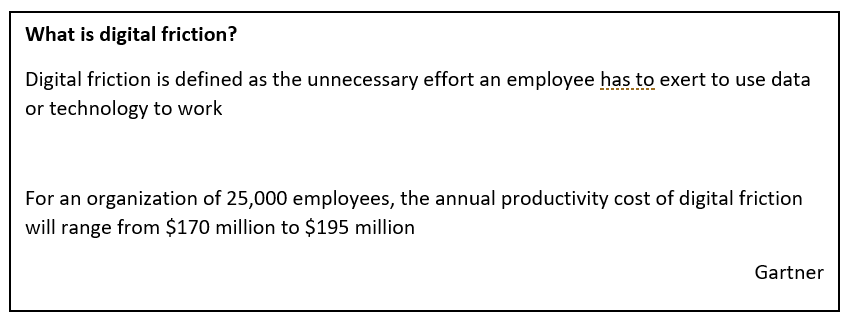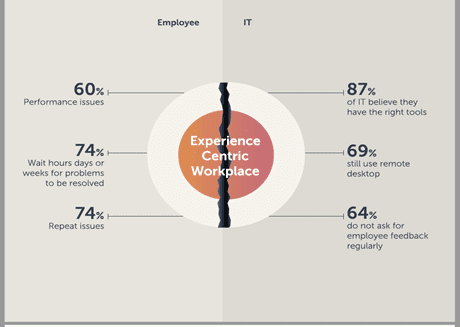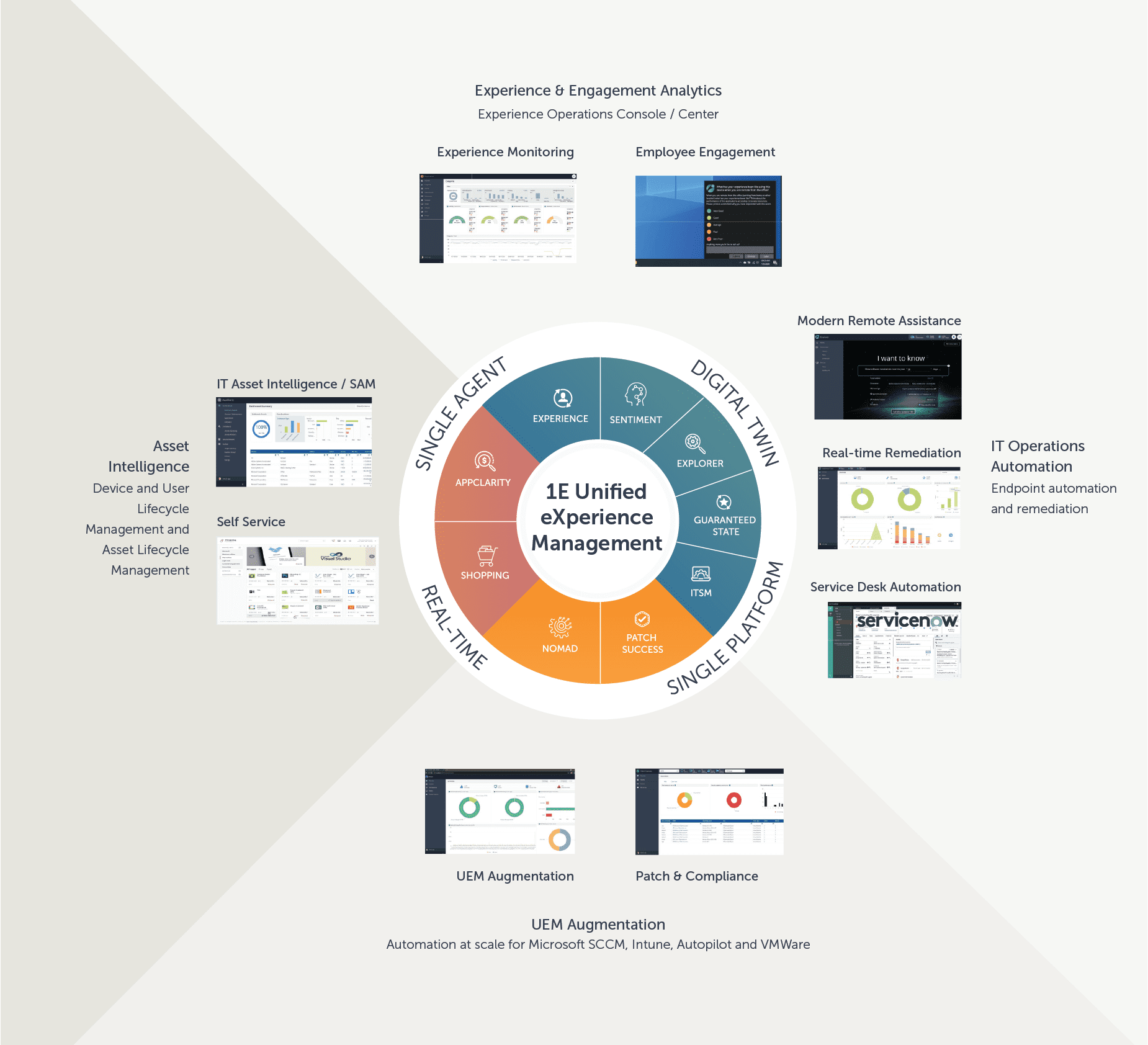For many years now, HR professionals have spoken ardently about the employee experience (EX). EX comprises every employee interaction throughout their tenure at an organization, from onboarding through to their very last day as an employee.
Digital employee experience (DEX) is an offshoot of EX and focuses on employees’ interactions with workplace technology specifically. Why? Because, particularly with the move to hybrid working, technology is now the primary way we get work done, collaborate, and contribute value to the business.
Now that more organizations are looking to sustain hybrid working in the long term, IT leaders are under pressure to reduce the levels of digital friction and enable a more advanced digital workplace that can support employees’ preferred ways of working.

DEX seeks to make the interactions employees have with technology as seamless as possible by uncovering and then fixing the issues that degrade the employee experience. DEX also ensures that future tech investments are aligned to the needs and wants of their users. It’s an extension of the myopic Digital Experience Monitoring (DEM) space which focuses on the gathering of analytics to determine whether the technology experience is good or bad. The challenge of DEM, however, is that employees still suffer from negative experiences despite IT knowing about them, because of the legacy solutions still in play.

So…what is DEX?
DEX solutions aggregate data about device and software performance and usage and context-sensitive sentiment data into a holistic experience score. Unlike DEM tools, DEX solutions also include automation capabilities to eliminate poor digital experiences at scale.

The role of DEX in an enterprise is essentially a journey of maturity consisting of three steps:
- Discover what is happening in your environment by aggregating data: This initial step is all about gathering the right analytics about the endpoint estate and is the central tenet of DEM. The analytics gathered should be able to tell you about how employees use their devices and applications, what (if anything) isn’t working to standard, and what is causing the issues.
- Verify the data’s validity using sentiment analytics: Polling users on their use and feelings toward specific workplace technologies or their overall digital experience will identify what they care most about. Ideally, the cumulative scores are aggregated in the DEX score.
- Act upon the findings: What differentiates DEX from DEM is the capability to do something about a poor digital experience. For more immature organizations, this will mean manual remediations on a case-by-case basis. For the most mature, an autonomic endpoint engine that proactively suggests fixes or fixes the issue across all affected endpoints.
What can you do to improve Digital Employee Experience?
If you’ve already adopted DEM as a discipline in your IT organization then you’re on the right path! If not, then your first hurdle is ensuring you have adequate data to analyze the digital employee experience. Ideally, this data is collected directly from the endpoint in real time so you’re not making decisions based on stale data.
The 1E Tachyon Platform’s module for experience analytics, Tachyon Experience, collects hard metrics from the endpoint in real time based on three criteria:
- Stability: The measure of “crashiness” to find out how often applications or the OS itself crash or hang.
- Performance: The measure of device statistics – CPU utilization and process queues, I/O, memory, network, etc.
- Responsiveness: A measure of the amount of time taken to create a process to simulate how an end user would use their device to determine if the endpoint or apps are running slowly.
These metrics are then aggregated with Sentiment data to deliver an overarching Experience Score per device.
Tachyon Sentiment is aimed at gathering specific data from specific users and broad-spectrum sentiment across all users, with each survey encompassing just one question. The reason for this is simple: too many questions and you risk alienating the users you’re trying to help.
What’s the point of the DEX Score?
The biggest benefit is undoubtedly that you’ve got to the point of having the right data to make informed decisions about your digital workplace infrastructure. You know what’s working and what isn’t, where improvements are most pressing, and how employees feel about their workplace technology. In simple terms, it’s a representation of the overall health of your workplace technology.
For the 1E Tachyon Platform, the DEX score represents the first stepping strong to true DEX improvements. But what comes after that point is where the magic happens and why more organizations are adopting Unified eXperience Management to manage DEX.
How do you improve DEX?
Unified eXperience Management (UXM) is an emerging new category that goes beyond Digital Experience Monitoring to achieve DEX improvements across the entire IT organization. It marries experience and sentiment analytics with real-time endpoint automation, endpoint management, and software asset intelligence in a single platform. The result? More than visibility into the digital employee experience, allowing you to proactively monitor, manage, and remediate issues in real-time.

What are the benefits of using UXM to make DEX improvements?
We cover UXM and its benefits in more detail in our CIO Guide to UXM. At a high level, there are four core benefits of using UXM for your IT organization and your DEX initiative.
- Go beyond analytics to improve DEX. Experience metrics are critical to delivering a first-rate digital experience, but experience doesn't belong in a silo – it's the responsibility, and within the remit of, several IT teams. UXM helps you go beyond analytics and the scope of existing DEM solutions, to solve the problems employees experience every day.
- Break Down IT Siloes. UXM is designed to align your IT organization with Exec-level employee experience initiatives. From the service desk to the end-user computing teams, UXM ensures everyone is working with the same data, focused on the same goals, and feels equally invested in business outcomes. Most importantly, it helps consolidate your technology stack to focus on what employees need most to keep them productive and engaged.
- Enhance your security posture. Improving digital experience doesn't need to happen at the expense of your security posture. Managing devices and applications is as much a security concern as an experience issue. UXM makes it simple for your Security and Operations teams to reduce your attack surface and maintain a healthy security posture.
- Reduce Costs. UXM is also about reducing the cost of managing the hybrid workplace. From platform consolidation to IT servicing costs, UXM ensures you get maximum ROI from your DEX initiative, alongside all the other benefits.
We’ll be discussing DEX and UXM at our upcoming Work From Anywhere Conference. We’ll be focused on how organizations can make the lead from traditional DEM to DEX and how to mature remediation strategies to support the hybrid workplace. Grab your ticket at www.wfaconf.com




